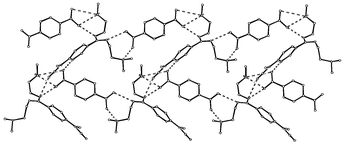Steering molecular dipoles from centrosymmetric to a noncentrosymmetric and SHG active assembly using remote functionality and complexation†
Abstract
Utilization of flexible pendant groups bearing a remote functionality and complexation with an appropriate partner leading to the fabrication of a noncentrosymmetric molecular crystal lattice of interest in quadratic nonlinear optical applications is explored. 7,7-Diamino-8,8-dicyanoquinodimethane, which possesses a large molecular hyperpolarizability but shows an overriding tendency towards centrosymmetric crystal lattice formation, is chosen as a critical test case of a nonlinear optical


 Please wait while we load your content...
Please wait while we load your content...